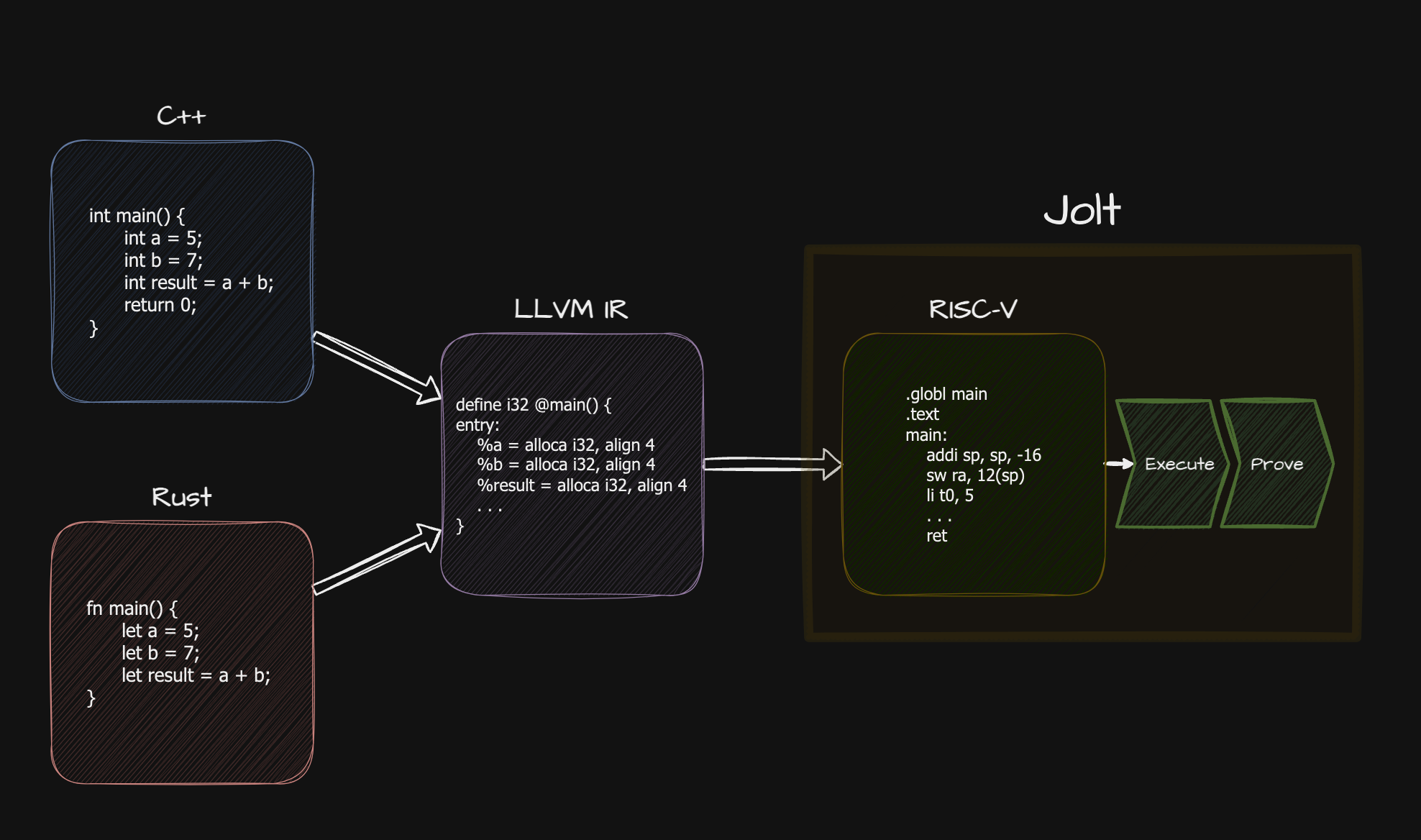RISC-V
RISC-V is an open source instruction set architecture (ISA) based on established reduced instruction set computer (RISC) principles. Every RISC-V implementation must include the base integer ISA, with optional extensions available for additional functionality.
Jolt implements the base RISC-V instruction set, making it a RISC-V-compliant virtual machine. This means Jolt can execute and prove any code that compiles to RISC-V.
Supported Instruction Sets
Current ISA Configuration: RV32IM
Base Sets
RV32I
The RV32I is the base 32-bit integer instruction set. It's designed to be sufficient for a complete software toolchain while being simple and minimal. Everything else in RISC-V (multiplication, floating point, atomic operations)q is built as extensions on top of this base ISA.
Key properties:
-
32-bit fixed-width instructions
-
32 integer registers (
x0-x31), wherex0is hardwired to zero. Registerx1/rais reserved for return address linkage by jump-and-link instructions,x2/spis conventionally used as stack pointer. Each register is 32 bits wide and used for both integer and memory address computations. -
32-bit address space (byte-addressed and little-endian). Memory accesses can be to byte (8-bit), halfword (16-bit), or word (32-bit) sized values
-
Basic arithmetic operations (add, subtract, shift, logical operations)
-
Load/store architecture means memory can only be accessed through dedicated load and store instructions - all other instructions operate only on registers
-
Simple addressing mode of base register plus 12-bit signed immediate offset. No complex memory addressing modes or memory-to-memory operations
-
Conditional branches and jumps are supported
For detailed instruction formats and encoding, refer to the chapter 2 of specification
Extensions
"M" Standard Extension for Integer Multiplication and Division
Key properties:
-
Multiplication operations generate 32-bit (lower) or 64-bit (full) results
-
Separate signed and unsigned multiply instructions
-
Hardware division with both signed and unsigned variants
-
All operations work on values in integer registers
-
Divide-by-zero results in a well-defined result (maximum unsigned value)
-
Maintains the simple register-based architecture of RV32I
-
Results always written to a single 32-bit register (for upper/lower multiplication results, two separate instructions are used)
-
All instructions in this extension are encoded in the standard 32-bit RISC-V format
Core Operations:
-
MUL: Multiplication, lower 32-bit result -
MULH/MULHU/MULHSU: Upper 32-bit multiplication (signed×signed, unsigned×unsigned, signed×unsigned) -
DIV/DIVU: Signed and unsigned division -
REM/REMU: Signed and unsigned remainder
For detailed instruction formats and encoding, refer to chapter 7 of specification
LLVM
LLVM is a versatile compiler infrastructure that supports a variety of languages and architectures. RISC-V is fully supported by the LLVM compiler infrastructure:
-
Official RISC-V backend in LLVM
-
Support for all standard extensions (M, A, F, D, C)
-
Integration with standard LLVM tools (clang, lld, lldb)
-
Support for both 32-bit and 64-bit targets
One of the key features of LLVM is its Intermediate Representation (IR). IR serves as a bridge between high-level languages and machine code. This means any language that compiles to LLVM IR (like C, C++, Rust, etc.) can be compiled to RISC-V and subsequently proven by jolt:
